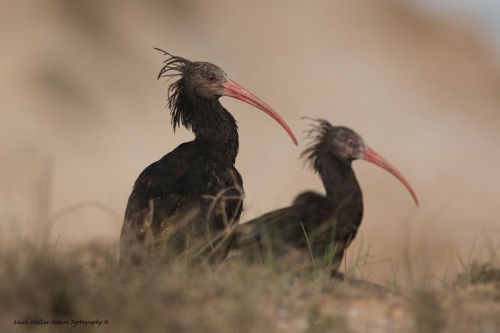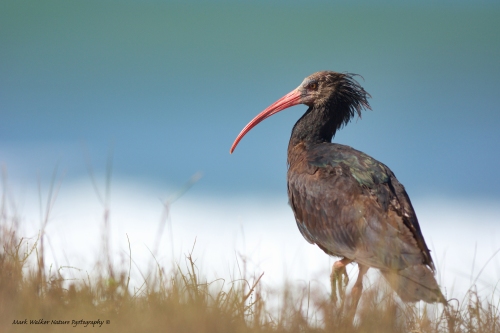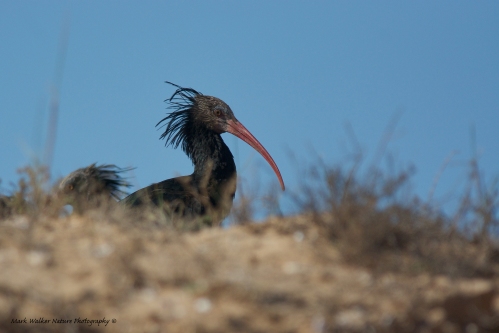One of the benefits of staying at the Atlantic coast of Morocco recently was that the place we stayed just happened to be in the middle of a few colonies of one of the rarest birds in the world, the Northern Bald Ibis.
The Northern Bald Ibis was once widespread across the Middle East, northern Africa, southern and central Europe, however records suggest it disappeared from Europe some 300 years ago. There are believed to be about 500 wild birds remaining in southern Morocco (up from a low of around 30-50 birds), and a few at a colony in Syria . To combat this ebb in numbers, recent reintroductions have been initiated in Turkey, as well as sites in Austria, Spain, and northern Morocco.
The reasons for the species’ long-term decline are unclear, but it is no surprise that hunting, loss of foraging habitat, and pesticide poisoning have been implicated in the rapid loss of colonies in recent decades.
Unlike other ibises, which nest in trees and feed in wetlands, the Northern Bald Ibis breeds on undisturbed cliff ledges, and forages for food in irregularly cultivated, grazed dry areas such as semi-arid steppes and fallow fields. The close proximity of adequate steppe feeding areas to breeding cliffs is an important habitat requirement.[
The wild Moroccan population can be found in the the Souss-Massa National Park , South of Agadir, where there are three known colonies, as well as near the mouth of the Tamri estuary (Oued Tamri) North of Agadir, where there is a single colony containing almost half the Moroccan breeding population.
The Moroccan breeding birds are resident, dispersing along the coast after the nesting season. It has been suggested that coastal fog provides extra moisture for this population, and enables the ibises to remain year-round. In the rest of its former range, away from the Moroccan coastal locations, the Northern Bald Ibis migrated south for the winter, and formerly occurred as a vagrant to Spain, Iraq, Egypt, the Azores and Cape Verde
Satellite tagging of 13 Syrian birds in 2006 showed that the three adults in the group, plus a fourth untagged adult, wintered together from February to July in the highlands of Ethiopia, where the species had not been recorded for nearly 30 years. They travelled south on the eastern side of the Red Sea via Saudi Arabia and Yemen, and returned north through Sudan and Eritrea.
Conservation Status
Although the Northern Bald Ibis was long extinct in Europe, many colonies in Morocco and Algeria survived until the early twentieth century, when they began to decline more rapidly, the last colony in Algeria disappearing in the late 1980s. In Morocco there were about 38 colonies in 1940 and 15 in 1975, but the last migratory populations in the Atlas Mountains had vanished by 1989. The species is now officially critically endangered according to the IUCN scale, with an estimated population in 2008 of around 500 in the wild and over 1,000 in captivity.


